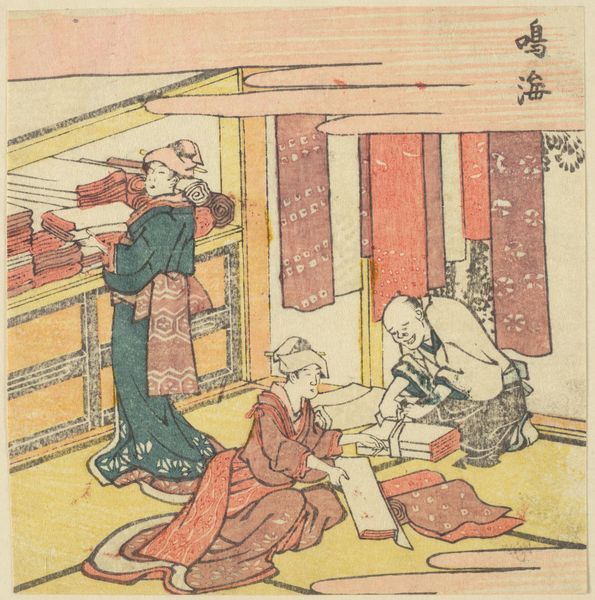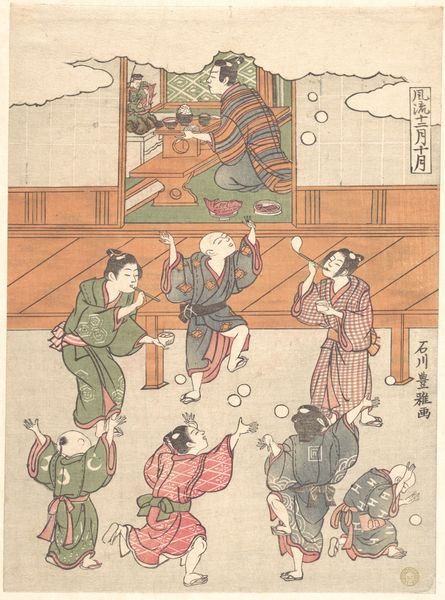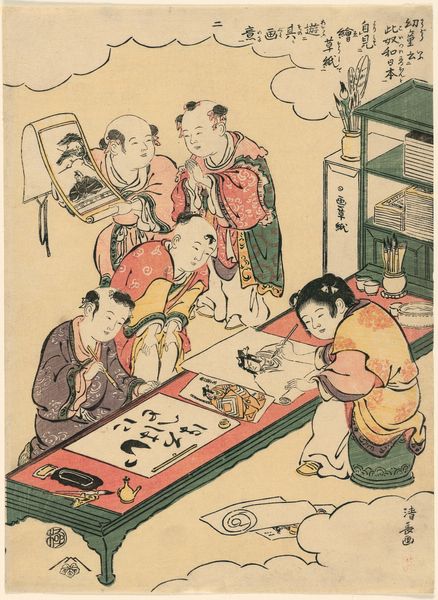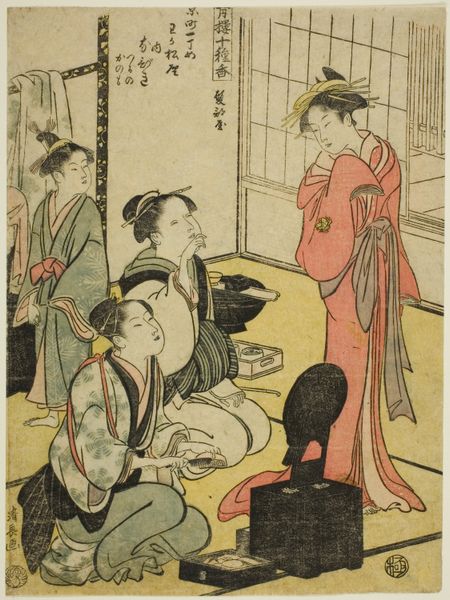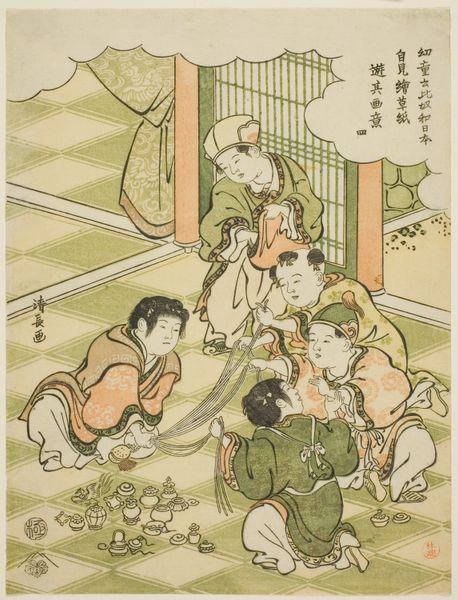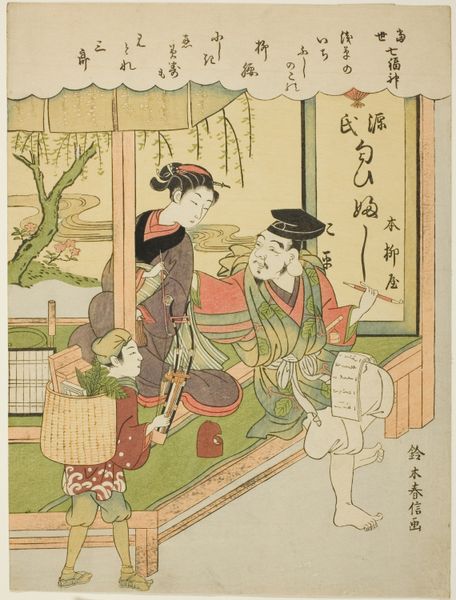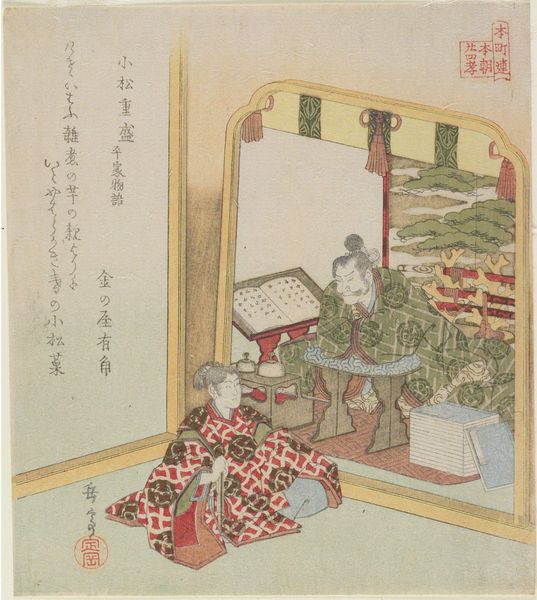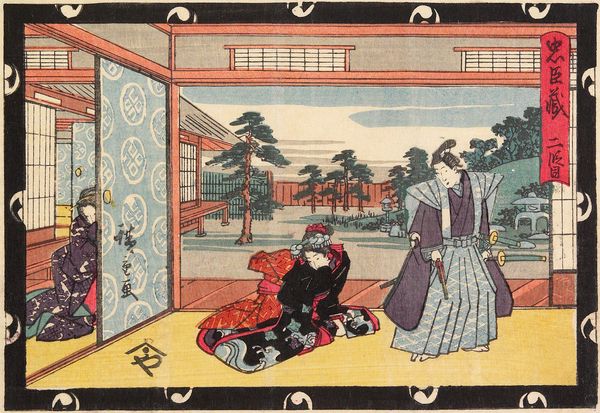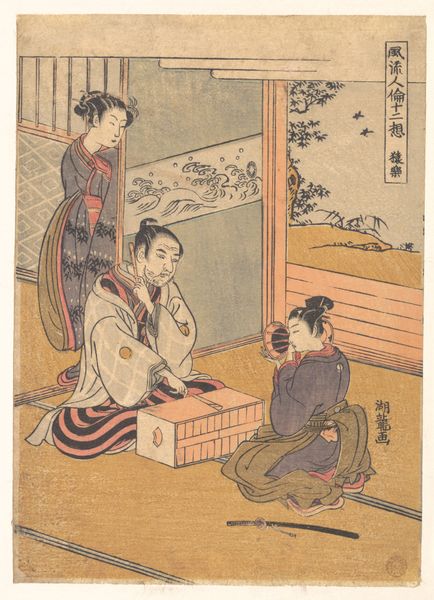
print, ink
#
portrait
#
narrative-art
# print
#
asian-art
#
ukiyo-e
#
japan
#
ink
#
genre-painting
Dimensions: 4 3/8 × 4 1/8 in. (11.1 × 10.4 cm) (image, sheet, square koban)
Copyright: Public Domain
Curator: This small print called "Mariko," by Katsushika Hokusai, done around 1810, immediately makes me think of lazy afternoons and shared meals. Does it spark anything in you? Editor: The initial feeling I get is one of deliberate intimacy. The figures are positioned low, within what appears to be an enclosed room. It highlights a constructed domesticity, a curated social performance almost. Curator: Absolutely. Ukiyo-e prints like this often depicted scenes of everyday life, and the fact that it's a print, made to be distributed widely, complicates that "intimacy" you pointed out. It's simultaneously intimate and public. Editor: And who gets access to that intimacy matters. The central male figure seems to be waited upon, while the woman serves, indicating specific gender roles and class dynamics within that constructed social space. How are those divisions reinforced and maintained? That's what jumps out to me. Curator: That's a crucial point. It's easy to romanticize the aesthetic, the soft colors, and miss those subtle cues of social hierarchy. You almost wonder if they chose certain fabrics and positions within the space, even facial expressions, as a matter of presentation and communication to each other or even those who could view these scenes. Editor: Exactly! And thinking about it being widely distributed, it potentially normalizes those roles and gazes, perpetuating these dynamics in a much broader social context. So it's beautiful, yes, but also a carrier of cultural ideology. Curator: Which I think Hokusai, with his masterful control of line and composition, understood implicitly. This wasn't just capturing a scene; it was about distilling and, to some extent, directing, the viewer's perception of that scene. Even using a simple color pallete like yellow, reds, browns and greens. Editor: So it begs the question: what narratives are being deliberately elevated or even erased by choosing this very precise slice of domesticity and these power dynamics as well? And I want to think about that every time I look at this now. Curator: Me too. This piece reminds us that what seems simple and pretty might be holding layers upon layers of complexity, just waiting for a conversation. Thank you.
Comments
No comments
Be the first to comment and join the conversation on the ultimate creative platform.

